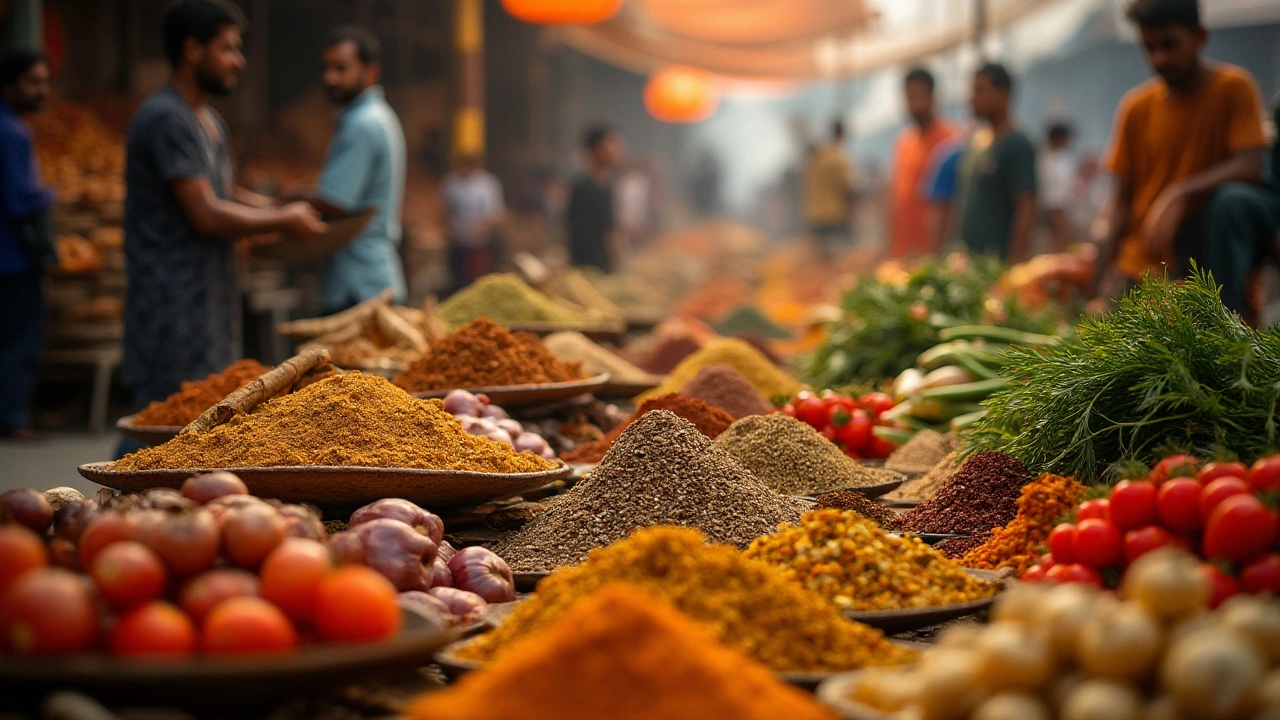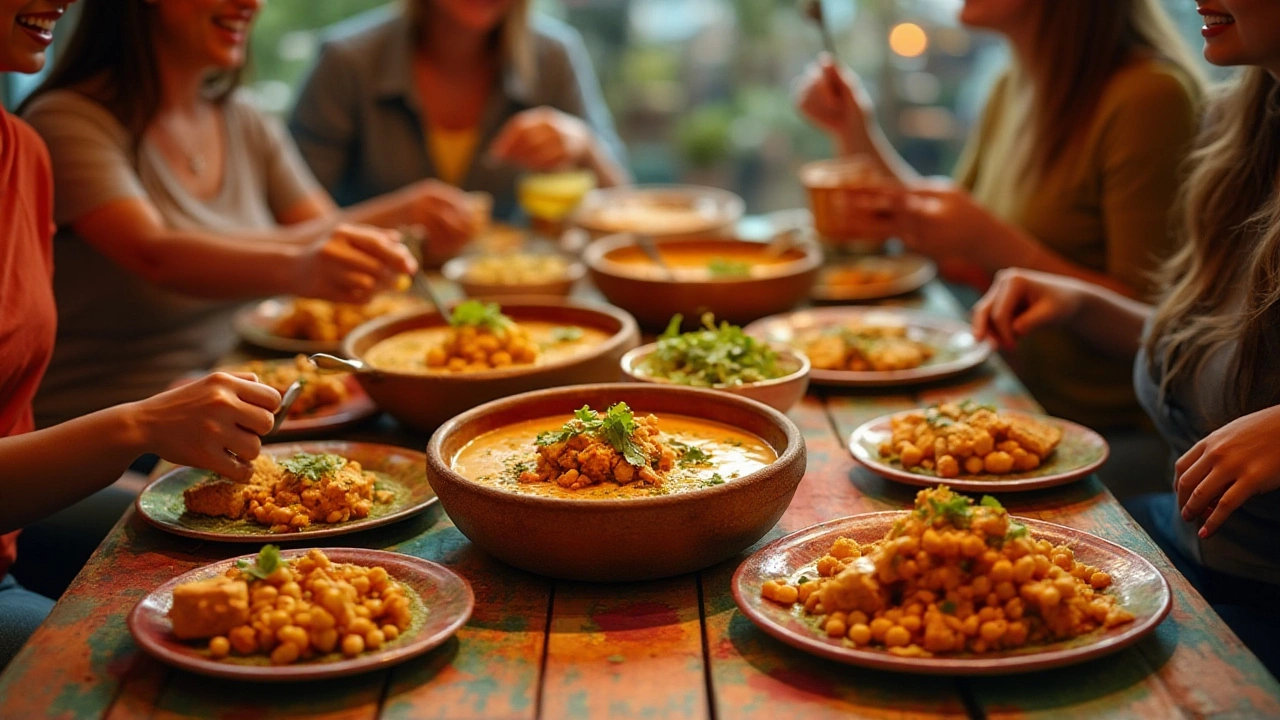30 Jan 2025
- 0 Comments
Indian restaurants are celebrated for their flavorful offerings, where every dish tells a story steeped in tradition and aroma. Whether you're a fan of rich spices or mild flavors, there's always something to savor.
When it comes to making healthier choices, knowledge is your best friend. It's not just about what you eat but also how it's prepared. Lean meats, vibrant vegetables, and wholesome grains can be found in many popular Indian dishes, making them both tasty and health-conscious options.
Finding the healthiest thing to eat in an Indian restaurant is an exciting challenge. From spice-laden curries to tender tandoori delights, knowing the nutritional value and preparation techniques can help you make smart decisions for your palate and health. Let's explore these delicious and diverse options together.
- Understanding Indian Cuisine
- Healthy Starter Options
- Nutritious Main Courses
- Tips for Healthy Dining
Understanding Indian Cuisine
Indian cuisine is a vibrant tapestry woven with rich flavors, diverse ingredients, and age-old culinary techniques. It reflects the diversity of the country itself, with each region bringing its own twist to the palate. Indian cuisine is perhaps best known for its bold spices and complex aromas, which are often intended to elevate simple ingredients into something extraordinary. When dining at an Indian restaurant, you can expect dishes that are as much an olfactory pleasure as they are a gustatory one. This experience is a result of centuries of refined trade and cultural exchanges that introduced new ingredients and cooking methods into the Indian culinary world.
The essence of healthy Indian food lies in the application of a harmonious blend of spices like turmeric, cumin, coriander, and fenugreek. Turmeric, renowned for its anti-inflammatory properties, is a common fixture in many Indian recipes. Cumin isn't just for flavor; it aids digestion—a quality that has earned it a perpetual spot in Indian kitchens. Another aspect of Indian food's health appeal is its use of plant-based protein sources. Lentils, chickpeas, and beans form the backbone of many traditional meals, providing necessary nutrition while being delightfully satisfying.
India's culinary principles often align with the concept of Ayurveda, emphasizing balance and health. Nutritious meals in India often incorporate components that deliver a range of health benefits. For example, the South Indian dish ‘sambar’ is more than just a spicy lentil soup. It is packed with vegetables, providing vitamins and minerals essential for maintaining a balanced diet. 'Ghee', or clarified butter, is another common ingredient that, though high in fat, is believed to aid digestion and improve absorption of fat-soluble vitamins.
A lesser-known fact is the adaptogenic properties of some spices used in Indian cuisine. Adaptogens are substances that help the body resist stressors of all kinds, whether physical or chemical. Spices like ‘ashwagandha’ and ‘holy basil’ have been staples in herbal medicine and cooking. In the words of Master Chef Vikas Khanna, "In India, cooking is not just about feeding the stomach. It's about nurturing the soul and healing the body."
“Indian food is a representation of who we are, our culture, our heritage... it is a literal reflection of the soil, the geography, and the soul of the place." - Chef Manjit Singh Gill
Whether you're relishing a creamy 'paneer tikka' from the North or sampling the tangy 'bhel puri' from the West, there’s a bounty of healthy options waiting to be explored. Familiarizing oneself with ingredients and their health benefits allows you to enjoy a guilt-free, flavorful experience. Embracing the flavors of India means savoring not only the remarkable taste but also the history and health that are intimately tied with every bite.

Healthy Starter Options
When it comes to kickstarting your meal at an Indian restaurant, the choice of starters can set the tone for a healthy dining experience. These appetizers, rich in flavor yet light on the stomach, pave the way for a nutritious meal. One common option is tandoori chicken, a lean protein choice marinated in yogurt and spices, cooked to perfection in a tandoor. This method of cooking not only enhances flavors but also keeps the dish exceptionally low in fat, making it a preferred choice for health enthusiasts.
Another excellent starter is vegetable pakoras. These bite-sized delights are made from a variety of fresh vegetables, coated lightly in seasoned chickpea flour batter, and then either shallow-fried or baked. Opting for baked or air-fried pakoras can provide a healthier alternative that retains the crunchiness and flavor without the extra oil. You may be surprised to find such healthy options hidden within these savory bites.
For a soup lover, there's always the option of a hearty dal soup, traditionally known as 'dal shorba'. This simple yet wholesome soup is made from lentils and adorned with aromatic Indian spices. Lentils are a fantastic source of plant-based protein and fiber, combined with spices that offer metabolism-boosting and anti-inflammatory benefits. According to a study in the Journal of Nutrition and Food Processing, lentils also aid in stabilizing blood sugar levels.
If you're inclined towards lighter fare, chana chaat provides a refreshing start to your meal. A colorful mix of chickpeas, chopped fresh vegetables, tamarind sauce, and a sprinkling of tangy spices, this dish brings together textures and tastes in a way that is both exciting and nutritious. The essential nutrients in chickpeas help in maintaining bone health, muscle mass, and a healthy digestive system, making chana chaat a delightful and wise choice.
Restaurant-goers often underestimate the role of these initial offerings in promoting a balanced meal. Ensuring you select wisely from these healthy Indian food options will leave you satisfied without overwhelming your appetite for the main course. Remember, an enjoyable dining experience is not just about the main event, but also these preambles that set the stage.

Nutritious Main Courses
When navigating a menu rich with aromas and spices, picking a nutritionally balanced main course becomes an adventurous journey. Indian cuisine includes a spectrum of flavors, each promising a unique culinary experience. Certain dishes rise to prominence not just for their taste but also for their health benefits. Daal, or lentil soup, is a staple that combines fiber and protein, creating a hearty meal that supports digestive health. By pairing lentils with a bowl of brown rice or whole wheat roti, you're crafting a complete protein, essential for muscle maintenance.
Another magnificent option is the tandoori dishes—a method of cooking that uses high heat in a clay oven, sealing in flavors without excessive oils. Tandoori chicken or fish provides a lean source of protein while brimming with spices such as turmeric and coriander, known for their anti-inflammatory properties. For vegetarians, Baingan Bharta is a savory blend of smoked eggplant mixed with spices, which packs in antioxidants and flavor while being light on calories. As food writer Meera Sodha once said,
"Eggplants are a perfect vehicle for smoky flavors and spices; they carry the essence of the Indian soul."
The world of curries also opens its doors to healthy dining options. Opting for vegetable-based curries, like Aloo Gobi or Masoor Dal, dishes up a nutritious punch without sacrificing flavor. Potatoes and cauliflower in Aloo Gobi provide rich sources of vitamins while red lentils in Masoor Dal offer essential minerals such as iron and potassium. It is wise to choose dishes with tomato-based sauces over creamy sauces like those found in kormas, to keep calorie intake in check. Then there's fish curry, often prepared with coconut milk, offering omega-3 fatty acids important for heart health.
Emphasizing whole, nutrient-dense ingredients allows diners not only to relish in bold flavors but also reap benefits for their body. Of course, enjoying a balanced feast can include some indulgence—occasional naan bread or samosa can be part of a well-rounded diet, ensuring your experience is both delicious and fulfilling. Pairing such meals with water or herbal spiced tea instead of sugary beverages helps maintain energy levels and digestion. Finally, remember that the art of Indian cooking often lies in its spices; embracing them fully invites both good taste and good health in every bite.

Tips for Healthy Dining
When stepping into an Indian restaurant, the blend of tantalizing aromas and colorful dishes can be quite overwhelming, making it a challenge to choose dishes that are both delightful and healthy. The key to enjoying a meal without compromising nutrition lies in the choices you make. For starters, it’s always a good idea to begin with dishes that are rich in vegetables or lean proteins. Options like a fresh salad adorned with a tangy lemon dressing, or roasted chickpeas sprinkled with cumin and coriander, provide a healthy start without heavy calories.
Opting for dishes cooked with minimal oil can significantly cut down on unnecessary fats. Tandoori items, cooked in a traditional clay oven, are excellent examples. They are marinated in yogurt and spices, which imbues them with flavor while keeping them lean. Swapping out creamy sauces with tomato-based alternatives like
